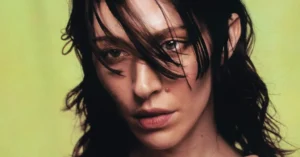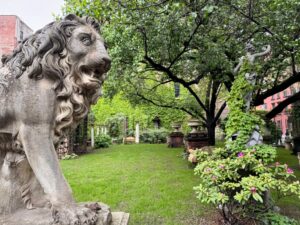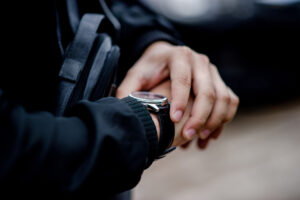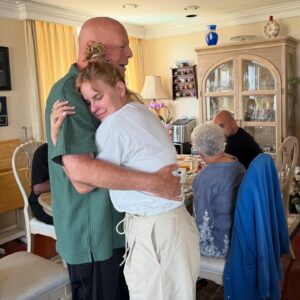Love Pulses Through Elle Pérez’s Photography
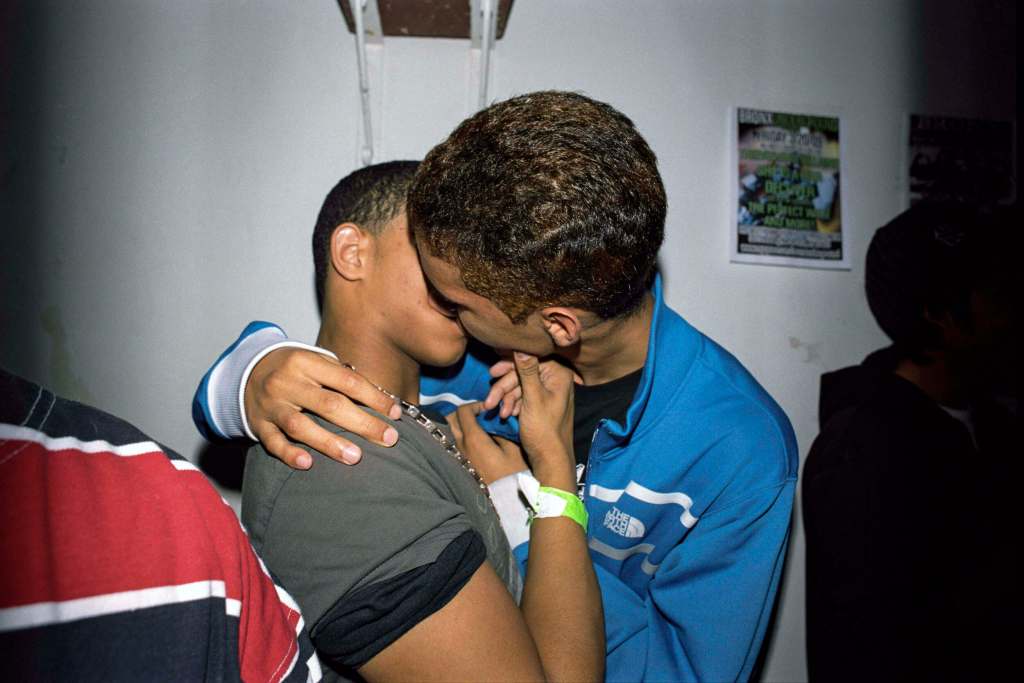

It is nearly impossible to discuss Elle Pérez’s art without mentioning its most potent undercurrent, coursing through each image of paramours or punks or the vulnerable earth itself: love. The artist’s photography is imbued with a sense of intimacy; more than that, it feels alive.
Their practice began in earnest within the punk scene of the Bronx, and the images from that time, in the early aughts, reflect the joyful freedom many of us have found in communities formed around local music. This pulse is palpable in their current exhibition, The World Is Always Again Beginning, History with the Present, on view at the American Academy of Arts and Letters. In a free zine Pérez made for the show, titled how the sea meets the sky, they say of those early days documenting the Bronx Underground (a project hosting shows at the First Lutheran Church, where many of the works were made): “I began to want to make photographs that were iconic. A picture that felt like it really summed up the moment that we were all experiencing together.” The 30-image exhibition, which also includes a collage and a series of short films, is a testament to that pursuit, which Pérez realizes with tenderness.
While attempting to solidify in a single frame the thrill and romance of those nights, Pérez was establishing their aesthetic. Kissing lovers, ear gauges, wristbands, sweat, the camera’s flash — a shining star illuminating the room — bouncing off bodies in a mosh pit. “Without quite realizing it, I was developing the conceptual, structural, and formal conditions for exploration and possibility that have since formed the foundation of my practice,” they write.

The World Is Always Again Beginning, History with the Present is presented chronologically, taking visitors from shows at the Bronx’s First Lutheran Church to the equally singular world of entertainment wrestling, in which Pérez’s cousin played the heel Tank. In “Tank” (2013/2015), the titular character drapes his wrestling belt over his shoulder, his gaze stoic and playfully suspicious. (In my notes from that day, I wrote, “The wrestling images feel more formal than the previous shots, and no less loving.”) The gallery walls are dotted with stanzas from an eight-part poem written by Pérez, each adding contextual mythos to the images they accompany:
VI I
make gifts out of loss
and these gifts have been a long time coming
my audience is my subject,
they are the same.
love with photography
Their newest series, La Despedida (2025), draws a parallel between Pérez’s grandfather’s garden in Cabo Rojo, Puerto Rico, and Claude Monet’s in Giverny, France, the site of the painter’s famous lily pads: both men had pink houses in small, lush wonderlands. In “Untitled (Pink House”) (2025), the wrought-iron detailing of Pérez’s grandfather’s door — an iconic, distinctly Puerto Rican architectural detail — is the color of a rose. Pérez was born in the Bronx to Puerto Rican parents, and their grandfather had a garden there, too, with “a long row of small delicate trees … like you had just arrived at the Versailles of West Farms.” He sold the property and moved back home. Pérez’s landscapes, capturing Cabo Rojo with a portraiture-like quality, are marvels.

The archipelago is my mother’s hometown, and a place that is, for me, characterized by naturally occurring hideaways: small bluffs, cave entryways, swimmable lakes nestled in canyons. That coziness is visible in this series, whose images combine the two gardens. “Untitled (wet and tired flowers)” (2025) features damp flowers and other flora embracing each other, an underfoot universe. Another picture shows the ocean crashing into the shoreline and dissolving with so much force that the wave froth looks like another element altogether — feathers, maybe, or dust. And in “Pedro in his Garden” (2012/2025), Pérez’s affectionate portrait of their late grandfather surrounded by purple bougainvillea, the artist distills the aforesaid love. It’s everywhere here: Pedro’s face, the water, the flowers, the garden’s sweet dog.
For a series of short films, screened in a small theater tucked away at the end of the third gallery, Pérez trains their camera on the stuff of Pedro and their other relatives’ lives: In “Viejos” (2016/2025), the family swims, applies make-up, lounges in the yard, with attention given to the domestic flotsam of the garden itself — bug spray, a lighter, a toothbrush for cleaning. “La Distancia,” a 16-mm film by Pérez’s grandfather documenting the family’s many years in the Bronx, is also on view. The World Is Always Again Beginning, History with the Present spans generations, but it is not about chronological time. It is about Pérez’s earliest impulse: to hold a feeling still — which is, really, a means of honoring the living, witnessing them. “As I write this, cities are burning,” Pérez states on the last page of their zine. “But one day, when we can finally reflect on this time, we will need pictures … that express, through poetic declaration, what it felt like when we were alive.”





Elle Pérez: The World Is Always Again Beginning, History with the Present continues at the American Academy of Arts and Letters (Broadway between West 155 and 156 Streets, Washington Heights, Manhattan) through July 3. The exhibition was organized by Chief Curator Jenny Jaskey in collaboration with Elle Pérez.
